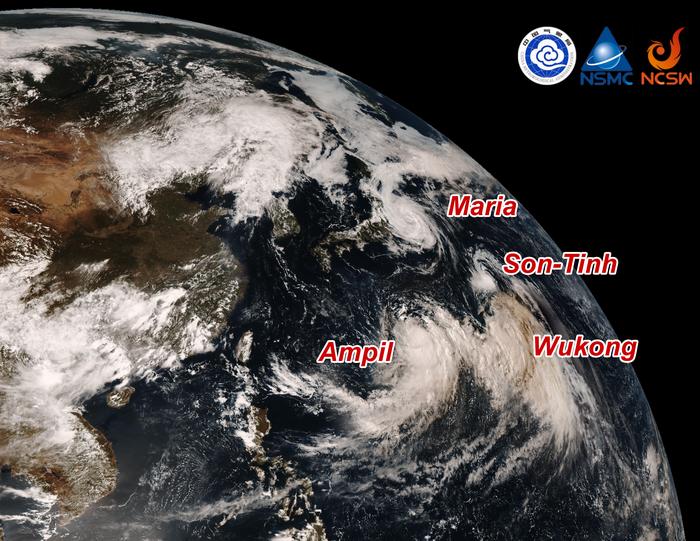Exploring the Impact of Different Weather Patterns on the Formation of Multiple Tropical Cyclones

Credit: National Satellite Meteorological Centre of China
Exploring the Impact of Different Weather Patterns on the Formation of Multiple Tropical Cyclones
This August, Japan and South Korea, particularly Japan, have experienced a dramatic surge in typhoon activity. From August 8 to August 13, within just six days, Typhoons Maria, Son-Tinh, Ampil, and Wukong consecutively formed over the waters east of Japan. Among them, Tropical Storm Maria caused record-breaking rainfall in parts of northern Japan, while just a few days later, Typhoon Ampil arrived during Japan’s Obon holiday week, causing significant damage in Japan. Starting from August 19, Typhoons Jongdari and Shanshan formed in quick succession, reaching the coastal areas of South Korea and Japan, respectively. This sequence of storms is a striking example of a phenomenon called multiple tropical cyclone (MTC) formation, where several typhoons either occur at the same time or follow one another in quick succession. The region typically sees about five of these clustering events each year, and their combined impact can significantly increase disaster risks and cause extensive damage.
So, why do typhoons seem to group together?
A recent study led by Professor Ruifen Zhan and her team at Fudan University sheds light on this puzzling question. Their research, published in Advances in Atmospheric Sciences, explores the key weather patterns that contribute to this clustering of tropical cyclones.
Prof. Zhan and her team have identified several important weather patterns that make it more likely for typhoons to cluster:
- Monsoon Trough: “This pattern forms when the subtropical high pressure system interacts with the monsoon trough,” Prof. Zhan explains. “Typhoons often develop along the monsoon trough and its surrounding areas.”
- Confluence Zone: This occurs where different wind currents meet. “Here, the southwesterly and southeasterly winds come together,” says Prof. Zhan. “Typhoons can form at this meeting point, influenced by surrounding high-pressure systems.”
- Easterly Waves: These are large, slow-moving waves of wind that travel from east to west. Typhoons often form along these easterly waves.
- Monsoon Gyre: This pattern involves a large, spinning system of winds called a monsoon vortex. “Typhoons can form within this spinning system,” Prof. Zhan adds.
The study also looks into how these patterns create the right conditions for typhoons to develop. For instance, the Monsoon Trough pattern is driven by certain wind and moisture conditions, while the other patterns rely on different atmospheric factors.
“In our previous research, we aimed to understand the atmospheric circulation patterns conducive to the formation of MTCs,” says Prof. Zhan. “This study provides a theoretical basis for improving the predictability and early warning systems for these complex events.”
Journal
Advances in Atmospheric Sciences
Article Title
Environmental Conditions Conducive to the Formation of Multiple Tropical Cyclones over the Western North Pacific
Article Publication Date
28-Aug-2024



